Emilio Vedova (Venice, 1919 - 2006) was one of the most representative artists of theInformal movement (an artist current that envisions a pictorial language distant from figuration and based on gestures, matter and sign). Vedova’s works were explosions of contrasting brushstrokes that aimed to denounce not so much an individual malaise as a collective one. This strong political commitment on the part of the author was not only expressed in his canvases, which thanks to gestural painting he managed to combine art and politics, but was very well manifested from his youth when he joined the Italian Resistance and participated several times in various political and social struggles.
The author’s rebellious, dynamic and political spirit was masterfully expressed in his works that flowed into large pictorial cycles with equally evocative titles. Often called "the Italian brother of Jackson Pollock", Vedova managed to anticipate certain linguistic aspects that were the focus of interest of the new artistic generations. His lively curiosity about the expressive possibilities of materials led him to use various artistic languages such as screen printing and lithography. Vedova traveled extensively during his life: Tokyo, the United States, Mexico and Latin America. Vedova, thanks to the freedom that distinguished him, was never afraid to break new ground and experiment, thus adding something new to the history of Italian art.
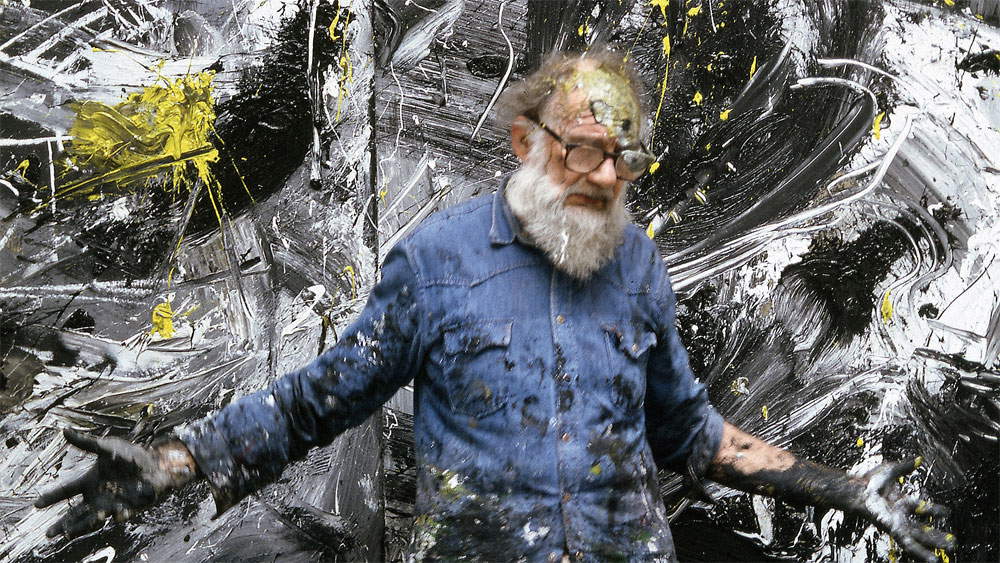 |
| Emilio Vedova |
Emilio Vedova was born in Venice on August 9, 1919, to a family of artisan-workers. When he was only eleven years old, he began working as an apprentice in a factory in order to support himself and buy materials for drawing and painting. In 1936, while still a teenager, an uncle hosted him in Rome: here the boy painted and drew extravagant perspectives of architecture, many self-portraits and tangles of figures. When he returned to Venice he decided, together with his companion Hermann Pircher, to go to Florence and attend a nude school, although they ended up spending a lot of time “on the street.” In 1940 the Opera Bevilacqua La Masa (now Fondazione Bevilacqua La Masa) granted Vedova a studio-loft in Palazzo Carminati, where the painter could better devote himself to his art. These early years of the author’s artistic activity were very important as they indicated the premises of his future work. In the drawings in which he depicted Venetian architecture, in fact already it is possible to perceive the tension of rhythmically repeated signs. In 1940 he exhibited his works for the first time at the Ongania Gallery in Venice, he also began to participate in some avant-garde initiatives.
In 1942 he moved to Milan, where the following year he held two exhibitions at the Corrente - La Spiga gallery and also participated in the IV Quadriennale d’Arte Nazionale in Rome, at the Palazzo delle Esposizioni. In this early Milanese period Vedova gravitated around the artists of the Corrente art movement, which played a crucial role, between the 1930s and 1940s, in preparing artists for the Italian artistic renewal that would be very evident in the Fronte Nuovo delle Arti to which Vedova adhered. During World War II Vedova joined Italian Resistance groups, first in Rome and then in Belluno. When the war ended, he returned to Venice where he moved his studio to Fondamenta Bragadin and began frequenting the restaurant L’Angelo, which soon became a regular meeting place for intellectuals and painters. It was in this artistic-intellectual environment that the artist first met art collector Peggy Guggenheim, who years later bought some of his works.
In October 1946 the New Front of the Arts was born, which Vedova himself joined along with artists Renato Birolli, Ennio Morlotti, Armando Pizzinato and a number of critics, including Giuseppe Marchiori . The movement’s goal was to accommodate the latest European experiences in Italian art at the time dominated by the Novecento movement (which was joined by artists such as Achille Funi, Mario Sironi, Emilio Malerba, etc.). Between 1946 and 1947 Vedova participated in international exhibitions. In 1950 he exhibited at the Venice Biennale and it was there that he met Annabianca Manni, whom he married in May 1951. His first solo exhibition abroad (1951) was hosted by the Viviano Gallery in New York, where he exhibited exclusively “black geometries.”
Following the splitting of the Fronte Nuovo delle Arti, Vedova joined the "Group of Eight", movement born of critic Lionello Venturi ’s desire to welcome the most abstract artists, including, in addition to the Venetian painter, Renato Birolli, Giulio Turcato, Ennio Morlotti and Giuseppe Santomaso.
In 1952 the artist won the Dufy Prize, which allowed him to spend a period in Paris. Beginning at this stage were the large canvases of the Cycle of Protest ’53 and Cycle of Nature ’53, in which he manifested his approach to informal art. The occasion for his first trip to Germany came with an invitation to participate in the first edition of Documenta in Kassel in 1955, curated by Arnold Bode. In 1957 he moved to his new apartment in Venice at Dorsoduro 46, where he lived for the rest of his life. The art critic Giulio Carlo Argan presented his first solo exhibition at the Marlborough Gallery in Rome in 1963, which was followed by various controversies by other critics. His first trip to the United States was in April-May 1965, where he then stayed until July, where an exhibition of drawings was held, but he was also called to renew the International Summer Academy in Salzburg. He taught at the Academy for five years, until 1969, a year, this one, when the number of students taking his course grew to two hundred.
1968 was the height of the student movement, and Vedova, in addition to participating actively in the demonstrations, was called upon by the students to teach “countercourses” at the Academy of Fine Arts in Venice. Social and political commitment on the part of the author was well evidenced in 1974 when Vedova promoted awareness to save the 15th-century Magazzini del Sale that the Venice city administration wanted to turn into municipal swimming pools. After months of struggle and protests, thanks in part to the artist’s intervention, the halls remained inviolate. In 1975 he began teaching at the Venice Academy of Fine Arts where he remained until 1986. In 1980 he was invited by Unam University to Mexico City for an anthological exhibition, so he took the opportunity to embark on a journey/study whose influence manifested itself in the Plurimi binari cycle. The 1980s were followed by major exhibitions dedicated to the Venetian artist, in Italy and abroad, which enabled him to consolidate his reputation as a great artist. In 1993 the Accademia dei Lincei awarded him the Feltrinelli Prize for the class of painting, and in 1997 he received the Golden Lion for his work at the XLVII Venice Biennale, also the year of the major retrospective held at the Castello di Rivoli. Emilio Vedova died on October 25, 2006 followed a month later by his wife.
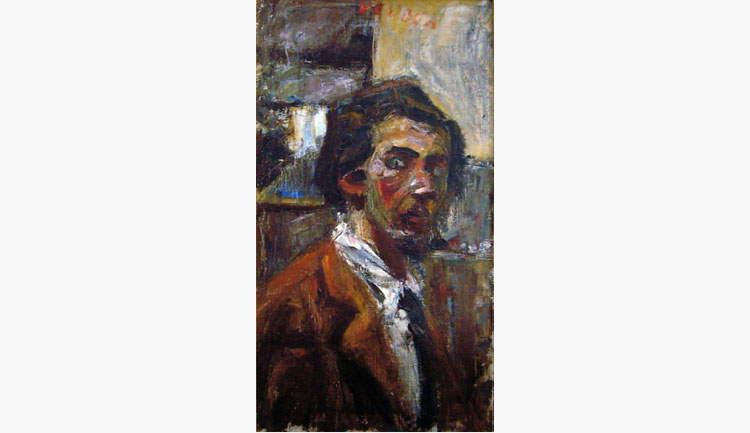 |
| Emilio Vedova, Self-Portrait (1938-1939; oil on canvas, 70 x 40 cm; Venice, Fondazione Emilio e Annabianca Vedova) |
 |
| Emilio Vedova, Caffeuccio veneziano (1942; oil on canvas, 43.2 x 55 cm; Giuseppe Iannaccone Collection) |
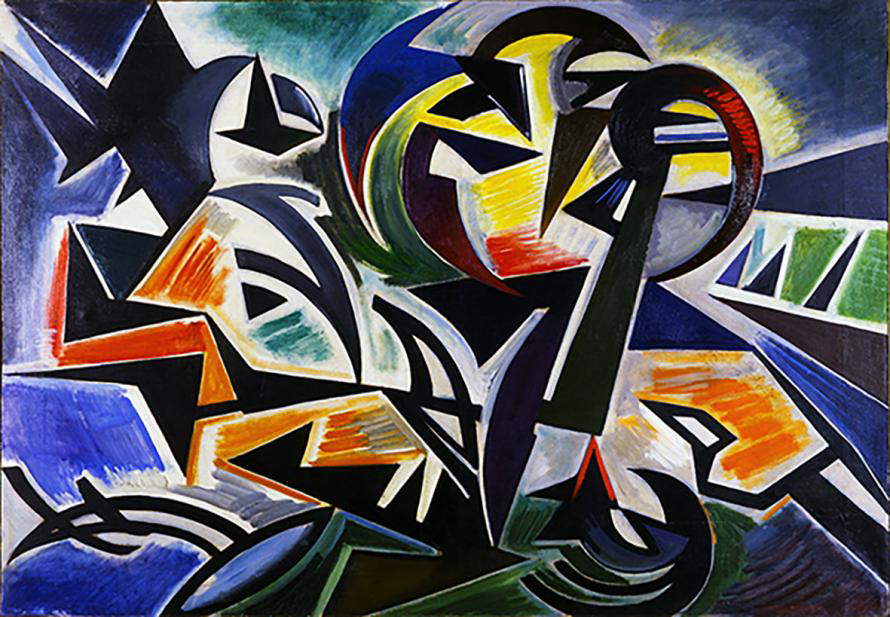 |
| Emilio Vedova, Hurricane (1948; oil on canvas, 90 x 130 cm; Private collection) |
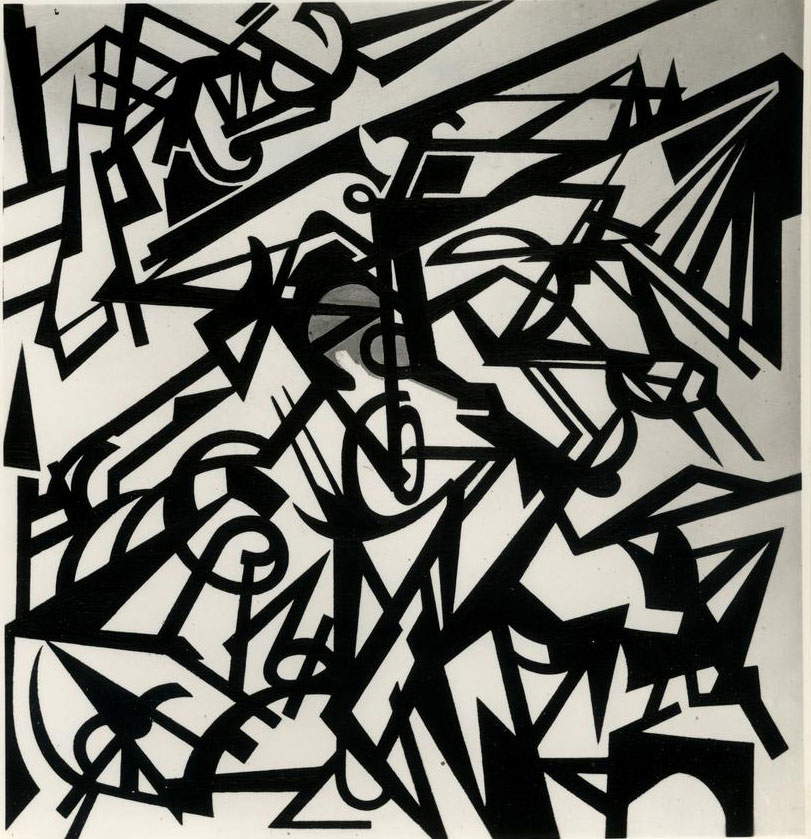 |
| Emilio Vedova, Concentration Camp (1950; oil on canvas, 124 x 128 cm; Brescia, Cavellini Collection) |
Vedova’s gestural painting was inspired by Futurist experiences and American ’action painting . He rejected realistic-didactic forms of expression from the outset and found in gestural abstraction the most suitable form of expression to address political and social issues. From the very beginning of his artistic career, gesture was very present, as can already be seen in Self-portrait (1938-1939), a work in which matter and gesture are very evident, or again in Caffeuccio veneziano (1942), in which the figures, seated at a table, are rendered through the juxtaposition of large brushstrokes rich in color and defined by a black line. In the 1940s the themes of his canvases accompanied and anticipated the political changes taking place, as the titles of his works indicate: Assault on the Prisons (1945), already fully abstract, but also Combat (1942) and Hurricane (1948). The latter marked an important moment in the Venetian painter’s art as it testifies to the now definitive transition to ’abstract art and the use of an increasingly energetic sign. The work is also important because the artist summarizes in metaphorical titles the historical and existential condition perceived as tension and conflict.
In these years of research Vedova produced very particular works such as Concentration Camp (1950), Explosion and Struggle both from 1949, the trend of which reflects Cubist lessons, particularly Picasso’s Guernica (1937), at the time the focus of much discussion. Vedova’s artistic language loomed unequivocally toward the informal, as evidenced by the two great Cycles of Protest and Cycles of Nature (1952-1953), in which the arist succeeded in expressing his ethical-political commitment and critical capacity toward the contradictions of contemporary society. In these two great pictorial cycles Vedova set aside the rational and geometric trend that characterized the works of the late 1940s to move towards a more nervous, tense and vibrant gestural expressiveness that was, then, the stylistic hallmark of the author. The 1960s were characterized by a great number of canvases, such as the cycles Per la Spagna (1962), but they were also years in which artistic research turned to a greater interaction with the viewer, whose enjoyment of the work, according to Vedova, could no longer stop in front of the painting. Thus saw the light of the first Plurimi (1961): material works inserted into the space of the room that create bifrontal paintings on wood exploiting various compositional techniques, such as collages, decollages, graffiti and burns. The first Plurimi were born in Venice in 1963 and were first exhibited at the Marlborough Gallery in Rome in the same year.
Further development of these works took place in Berlin, where Vedova spent a period from 1963 to 1965: here he made the seven Plurimi of Absurdes Berliner Tagebuch ’64 that were exhibited at Documenta III in Kassel. These large works might appear to be hybrids between painting and sculpture, but the strong gestures testify to their properly painterly nature. Moreover, the audience in order to better observe the work is almost obliged and urged to get closer, walk around and interact. If Jackson Pollock broke the traditional patterns of easel painting by placing the canvas on the ground and physically interacting with it while still remaining in conventional space, Vedova, with the Plurimi, took another step forward by establishing a physical relationship not only between work and artist but also with the viewer. Towards the 1970s the Venetian artist experienced a period of reflection: in this phase his works were characterized by a different type of technique. A new pictorial season opened, evidenced by the plurimi-binari (1977-1978): these are works consisting of large structures that frame wooden panels of irregular shape and painted on both sides. The binary steel structures seem a reminder of the geometry that characterized the works of the late 1940s. Parallel to these large works, the author experimented with various forms of graphic art, producing various silkscreens, lithographs and etchings. Another series of relevant works from these fruitful years for the painter were the Cosiddetti Carnevali, which he developed between 1977-1983, very different from the works produced up to that time. In the familiar context of sign and gesture, the painter introduced a very explicit narrative element: the masks that were applied to the painted surfaces and were clearly recognizable despite the deformations and traces of color. Until then the titles unequivocally signaled the content of the work but this did not mean that the painter’s sign/gesture was equally “readable”, in other words it was not narrative. Instead, the element of the mask made the subject of the canvas immediately comprehensible.
In 1981 Vedova made a trip to Latin America and, impressed by the Mexican muralists, began to use color again in his large canvases, but most interestingly he also changed the format of his works, no longer square or rectangular formats but circles painted with strong black and white contrasts. The work Not Where ’87 II is a disc 280 cm in diameter. Apart from black and white there are no colors. On one face of the circle dark masses of color oppose and repel each other, while on the other face some black bands block the centripetal movement; there is no definite where . It was precisely that unraveling of black against white that prevented disks from alluding to spheres. Vedova’s last major painting cycle was ... Continuum: here, the large canvases were not conceived in isolation from one another, but constituted as a whole a scenography of variable stratifications, an interpenetration between canvas and canvas that as evoked by the title, gave an impression of continuity, because for the author painting is an infinite ribbon from which we can peer at some fragments.
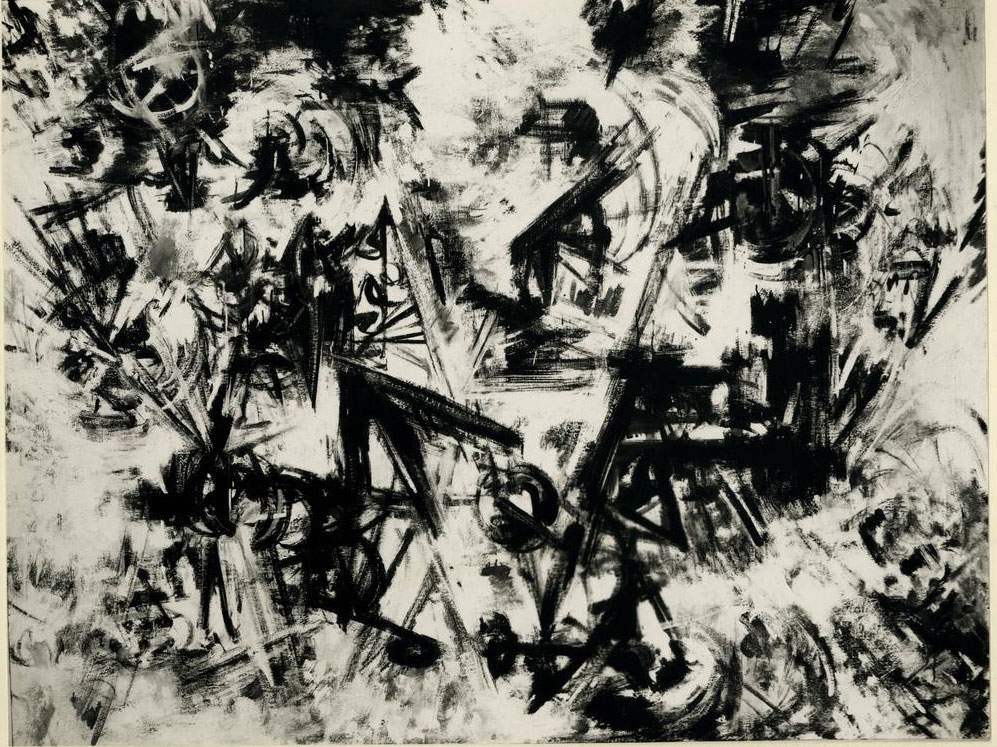 |
| Emilio Vedova, Nature Cycle No. 7 (1953; tempera on canvas, 145 x 190 cm; Araraquara, Museum of Modern Art) |
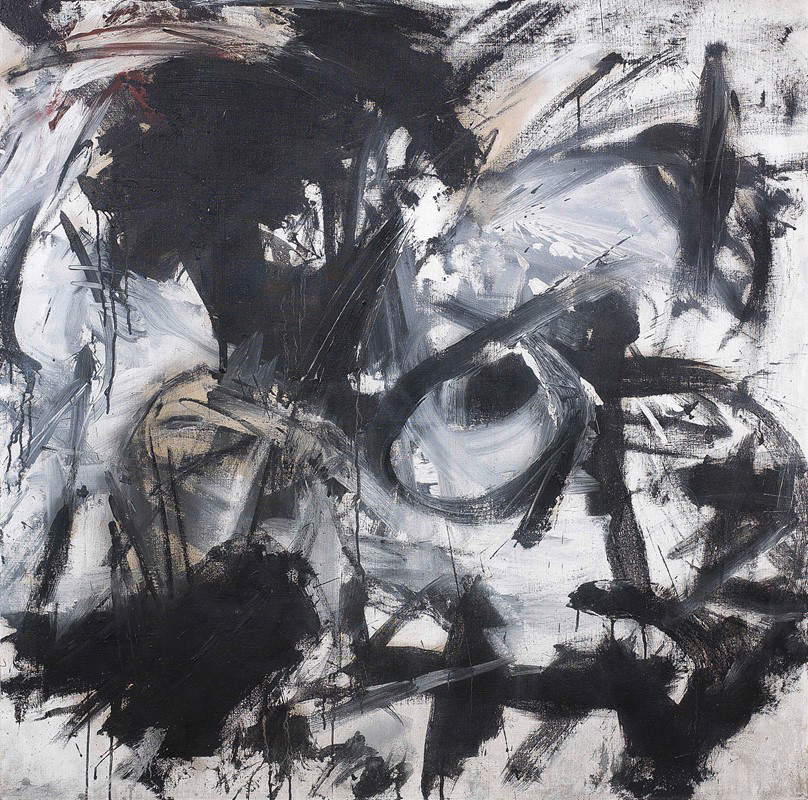 |
| Emilio Vedova, For Spain No. 8 (1962; oil on canvas, 145 x 145 cm; Private collection) |
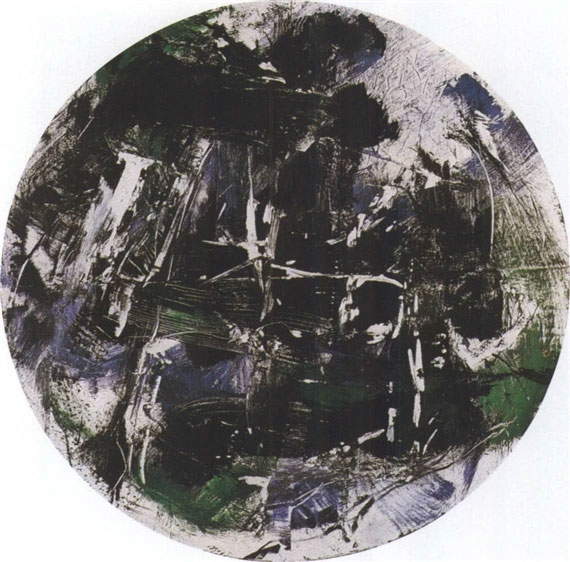 |
| Emilio Vedova, Not Where ’87 II (1987; oil on panel; Private collection) |
If you want to know Emilio Vedova’s artistic production in depth, you cannot fail to visit the Fondazione Emilio e Annabianca Vedova in Venice, whose main purpose is the enhancement of the artist’s works. The Foundation has two exhibition spaces: the Magazzino del Sale built on the design of the famous Italian architect Renzo Piano and the Spazio Vedova, restored in 2010, which in addition to hosting various exhibitions is also a multifunctional environment capable of hosting events of various kinds.
Staying still in the Lagoon, the International Gallery of Modern and Contemporary Art houses important works by the artist, such as some panels from the Cycle of Protest and works from the Abstract phase. Other key museums to visit if you want to admire Vedova’s works are: Mart (Museum of Modern and Contemporary Art of Trento and Rovereto), National Gallery of Modern and Contemporary Art in Rome, the Museion Foundation in Bolzano, the Galleria Civica d’arte Moderna e Contemporanea in Turin, and MAG (Gallarate Art Museum). MoMa (Museum of Modern Art) and the Solomon R. Guggenheim in New York also own some of the painter’s works.
 |
| Emilio Vedova: the life and works of the informal artist |
Warning: the translation into English of the original Italian article was created using automatic tools. We undertake to review all articles, but we do not guarantee the total absence of inaccuracies in the translation due to the program. You can find the original by clicking on the ITA button. If you find any mistake,please contact us.